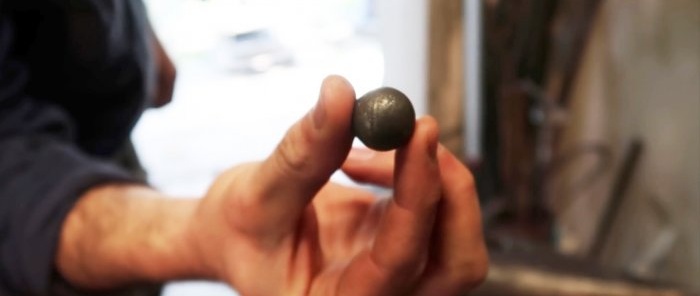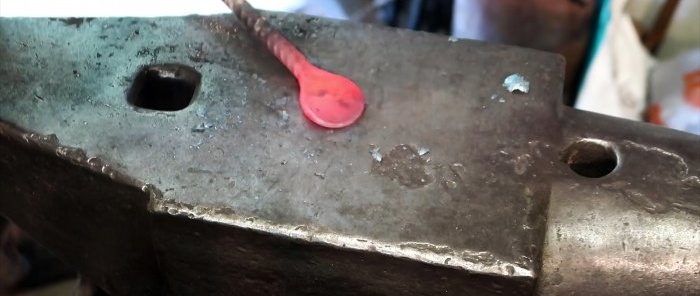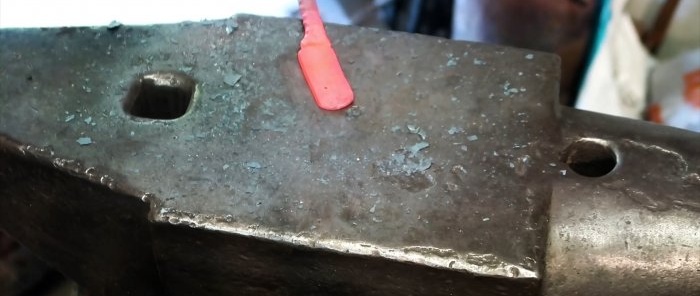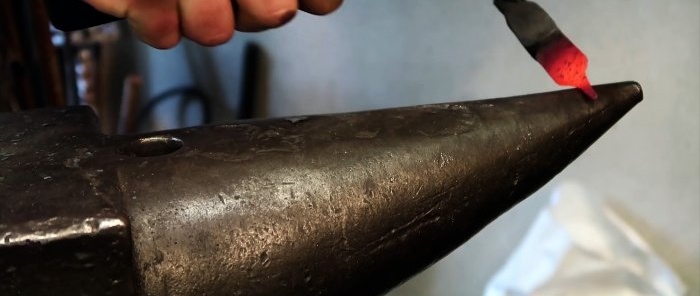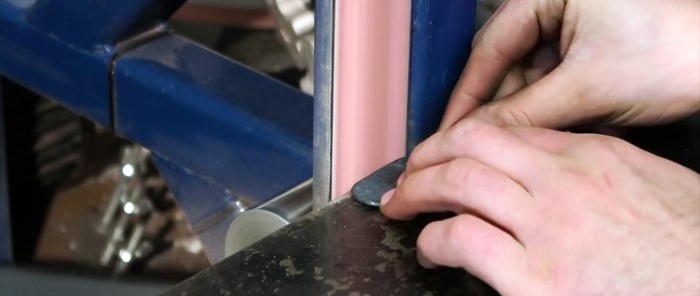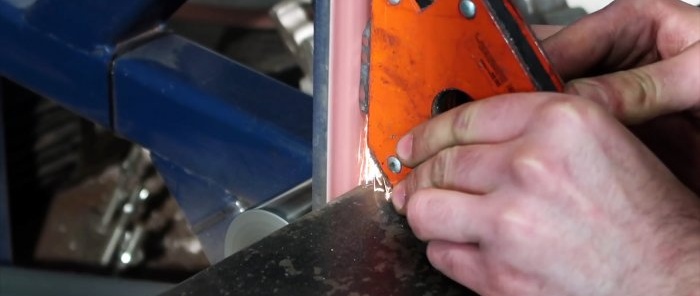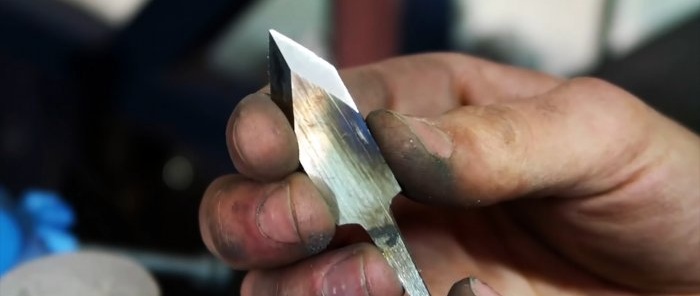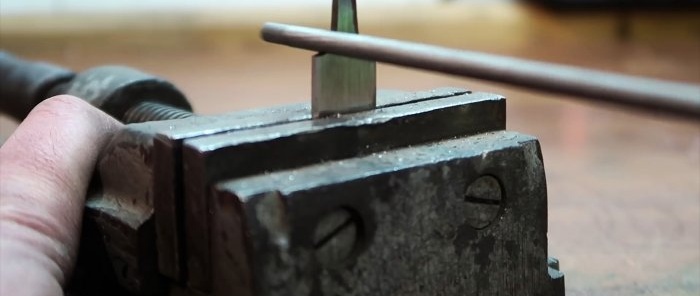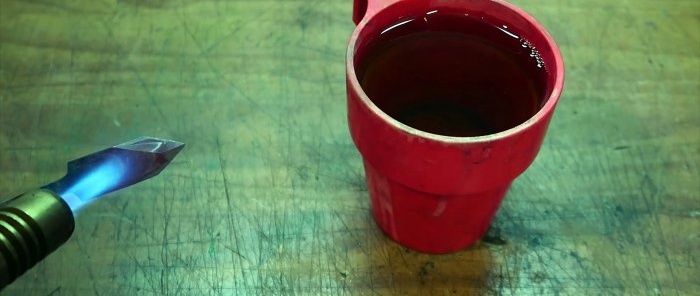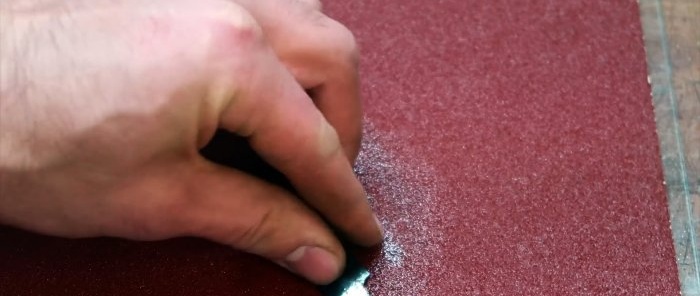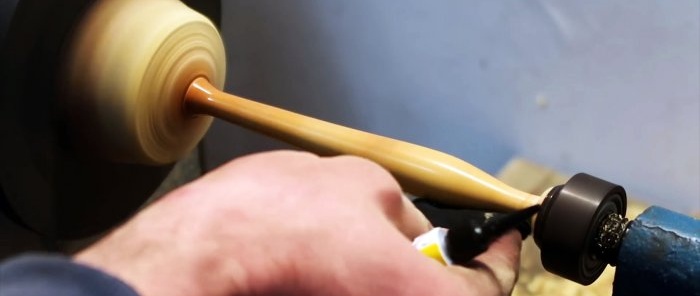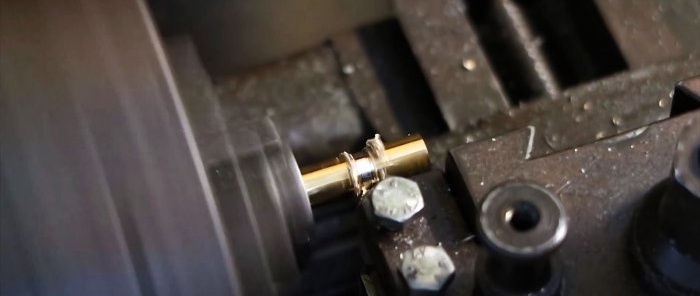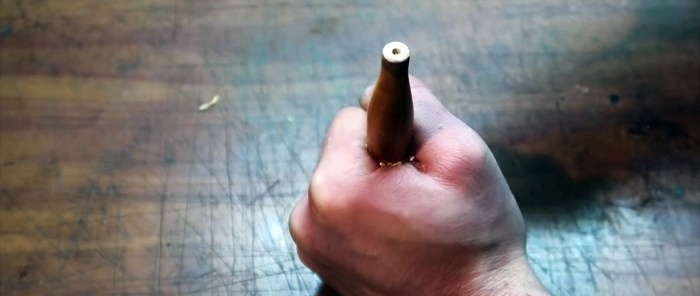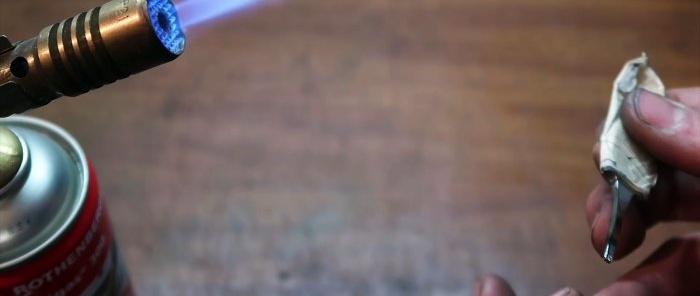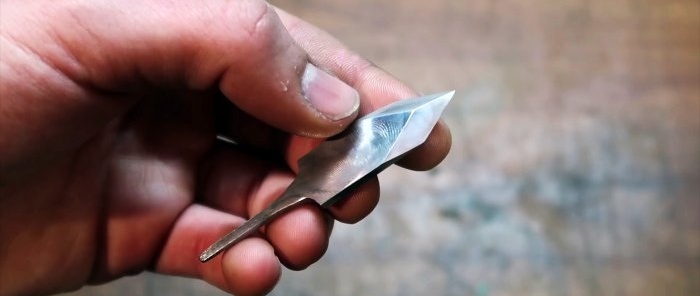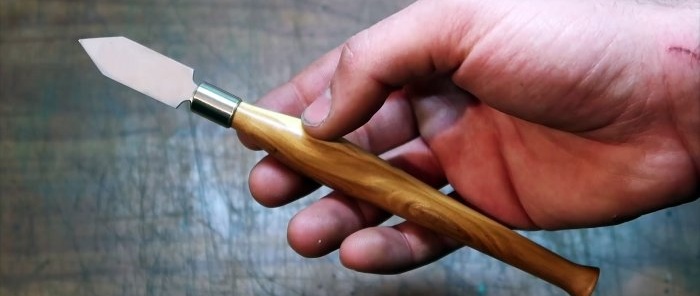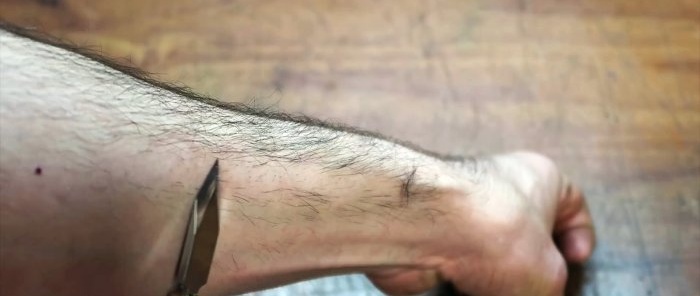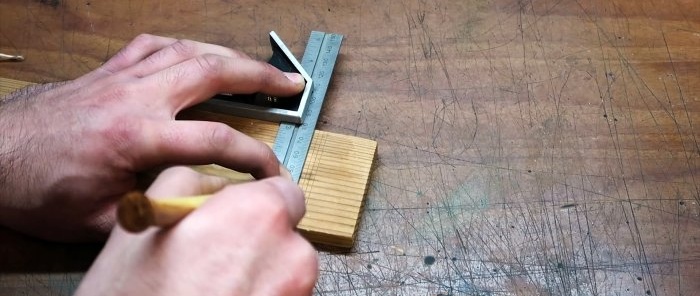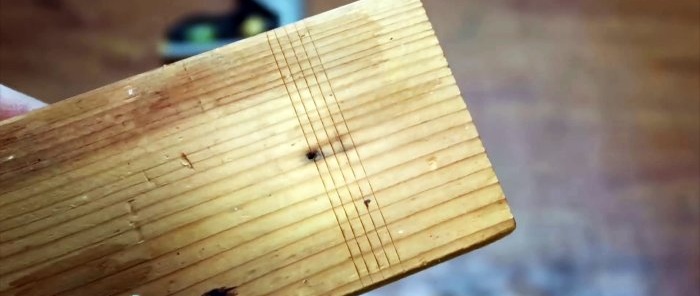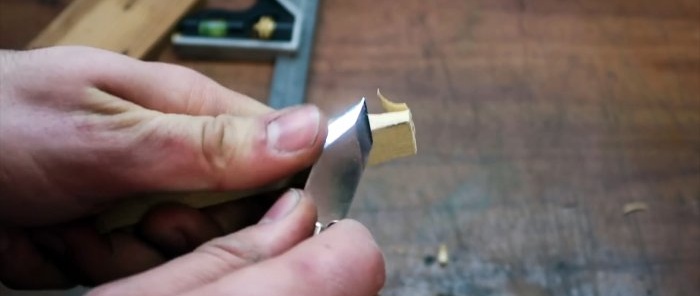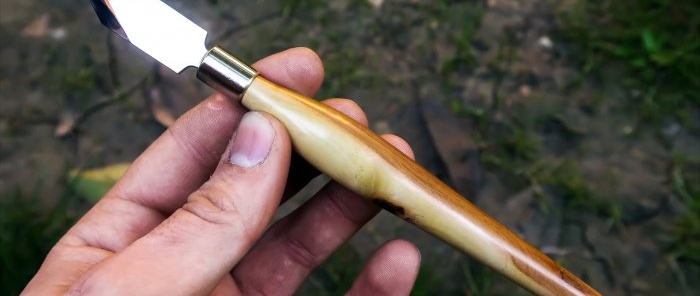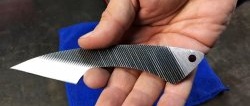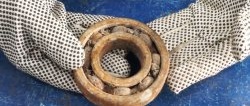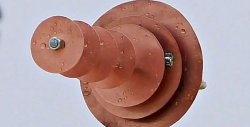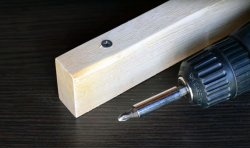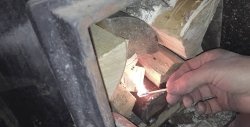How to forge a cutter from a bearing ball
The bearing ball is made of very high quality steel, so if you forge a cutter from it and apply the correct hardening, the cutting edge of the tool will hold its edge perfectly. At first glance, the implementation of the idea of a blade made from a ball is very difficult, but with due patience the task is quite doable.
For ease of operation, the ball must be welded to a piece of reinforcement. It is then placed in the lit coals and heated until it glows light yellow.
Until it cools down, it must be forged into a bar. As soon as the workpiece turns red, it must be returned for heating. If you continue to forge at this temperature, the metal may crack.
Alternating forging with heating, it is necessary to forge the ball first into a bar, then into a strip. After this, the welded rod is torn off from the workpiece. Next, it is forged using pliers. You need to form a shank on one edge of the strip.
If you have a belt grinder, it is enough to simply give the workpiece an approximate shape during forging, and finish the rest by grinding.In the absence of experience, this will be faster than attempting fine forging. The workpiece is first ground on the sides to remove dents from the hammer, then it is leveled.
Next you need to display the descents. It is convenient to do this with a special stop with adjustable angles, but it can be done without it. First, the tip of the blade is formed, then the descents are made.
After this, it is necessary to harden the cutting edge. To do this, it is heated until a red tarnish appears and cooled in water. Then you need to temper the steel to reduce its brittleness. The blade is reheated until it turns brown and is dipped in water for a second. Then the knife is finished by hand on sandpaper.
A comfortable handle for the blade is turned from a wooden blank. The easiest way to do it is on a lathe. To protect the finished handle from moisture, you can lubricate it with superglue several times while it rotates, or soak it in oil.
A cap for a knife is machined from a bronze rod, with a hole to match the diameter of the blade shank.
A hole is drilled in the end of the handle.
A cap is placed on top of it with glue, and the shank is hammered in. Finally, all that remains is to bring the cutting edge to a razor sharpness.
This cutter would be an excellent tool for a woodworker or carpenter.
Looks great.
What you will need:
- large ball from a bearing;
- any rod or fittings;
- handle blank;
- brass rod.
Blade forging process
For ease of operation, the ball must be welded to a piece of reinforcement. It is then placed in the lit coals and heated until it glows light yellow.
Until it cools down, it must be forged into a bar. As soon as the workpiece turns red, it must be returned for heating. If you continue to forge at this temperature, the metal may crack.
Alternating forging with heating, it is necessary to forge the ball first into a bar, then into a strip. After this, the welded rod is torn off from the workpiece. Next, it is forged using pliers. You need to form a shank on one edge of the strip.
If you have a belt grinder, it is enough to simply give the workpiece an approximate shape during forging, and finish the rest by grinding.In the absence of experience, this will be faster than attempting fine forging. The workpiece is first ground on the sides to remove dents from the hammer, then it is leveled.
Next you need to display the descents. It is convenient to do this with a special stop with adjustable angles, but it can be done without it. First, the tip of the blade is formed, then the descents are made.
After this, it is necessary to harden the cutting edge. To do this, it is heated until a red tarnish appears and cooled in water. Then you need to temper the steel to reduce its brittleness. The blade is reheated until it turns brown and is dipped in water for a second. Then the knife is finished by hand on sandpaper.
A comfortable handle for the blade is turned from a wooden blank. The easiest way to do it is on a lathe. To protect the finished handle from moisture, you can lubricate it with superglue several times while it rotates, or soak it in oil.
A cap for a knife is machined from a bronze rod, with a hole to match the diameter of the blade shank.
A hole is drilled in the end of the handle.
A cap is placed on top of it with glue, and the shank is hammered in. Finally, all that remains is to bring the cutting edge to a razor sharpness.
This cutter would be an excellent tool for a woodworker or carpenter.
Looks great.
Watch the video
Similar master classes
Particularly interesting
Comments (0)

